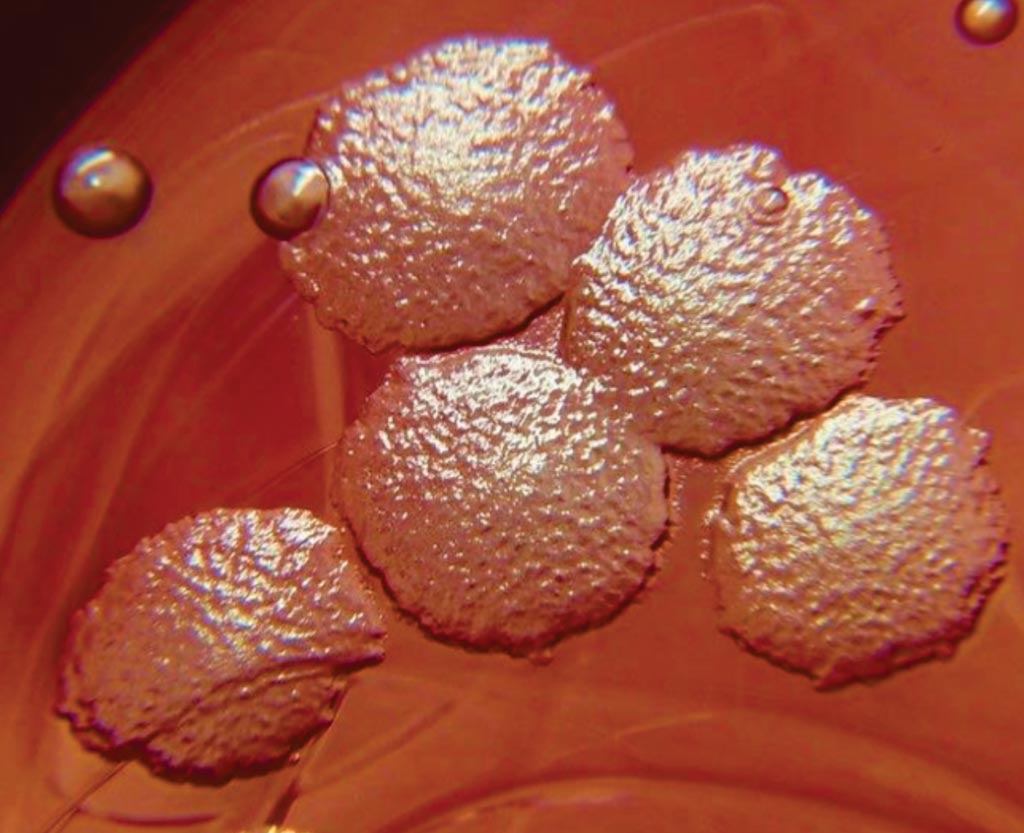Female Bladder Bacteria Reveal Urogenital Microbiota
By LabMedica International staff writers
Posted on 12 Jul 2018
Contrary to medical dogma, urine is not sterile, even in asymptomatic individuals. For over 60 years, the standard urine culture protocol has represented the primary tool for detecting bacteria in clinical microbiology laboratories.Posted on 12 Jul 2018
Culture-independent analysis of urine obtained by suprapubic aspirate, which bypasses the vulva, vagina, and urethra, demonstrates the presence of bacteria in the bladders of women. A new study has found that the female bladder not only contains bacteria, but the microbes are similar to those found in the vagina.

Image: Colonies of Pseudomonas aeruginosa on blood agar after cultivation for 48 hours at 37°C. Small, smooth colonies are Enterococcus faecalis (Photo courtesy of microbiologypictures).
Scientists from the Loyola University Chicago (Maywood, IL, USA) and their international colleagues collected urine samples by transurethral catheter from female that were recruited from a separate study. Four patients were chosen to sample both the bladder and vaginal environments. All samples underwent standard urine culture (SUC) as well as expanded quantitative urine culture (EQUC). Each morphologically distinct colony type was isolated on a different plate of the same medium to prepare a pure culture that was used for identification. Matrix-assisted laser desorption ionization–time of flight mass spectrophotometry with the MALDI Biotyper 3.0 software program was used to identify the bacterial strains.
Genomic DNA was extracted from pelleted cells using a phenol–chloroform method. DNA was prepared and sequenced using the Illumina Hi-Seq platform with library fragment sizes of 200–300 bp and a read length of 100 bp. Whole-genome metagenomic sequencing was performed on the Illumina HiSeq 2500. The phylogenetic analysis was conducted by extracting amino acid sequence of 40 universal single copy marker genes from bacterial collections.
The team isolated and genome-sequenced 149 bacterial strains from catheterized urine of 77 women. This culture collection spans 78 species, representing approximately two thirds of the bacterial diversity within the sampled bladders, including Proteobacteria, Actinobacteria, and Firmicutes. Detailed genomic and functional comparison of the bladder microbiota to the gastrointestinal and vaginal microbiotas demonstrates similar vaginal and bladder microbiota, with functional capacities that are distinct from those observed in the gastrointestinal microbiota. Uropathogenic species, such as Escherichia coli, Klebsiella pneumoniae, Proteus mirabilis, Enterobacter cloaceae, Morganella morganii, and Pseudomonas aeruginosa, represented only 7.7% (6/78) of the phylogenetic diversity cultivatable from the bladder.
Whole-genome phylogenetic analysis of bacterial strains isolated from the vagina and bladder in the same women identifies highly similar E. coli, Streptococcus anginosus, Lactobacillus iners, and Lactobacillus crispatus, suggesting an interlinked female urogenital microbiota that is not only limited to pathogens but is also characteristic of health-associated commensals.
The author concluded that this unique genome-sequenced culture collection should alter the way doctors view the bacteria of the female pelvic floor both by providing new diagnostic and treatment options for urinary tract infections (UTIs), urgency urinary incontinence, and other associated urinary tract disorders. The study was originally published online on April 19, 2018, in the journal Nature Communications.
Related Links:
Loyola University Chicago







 Analyzer.jpg)





